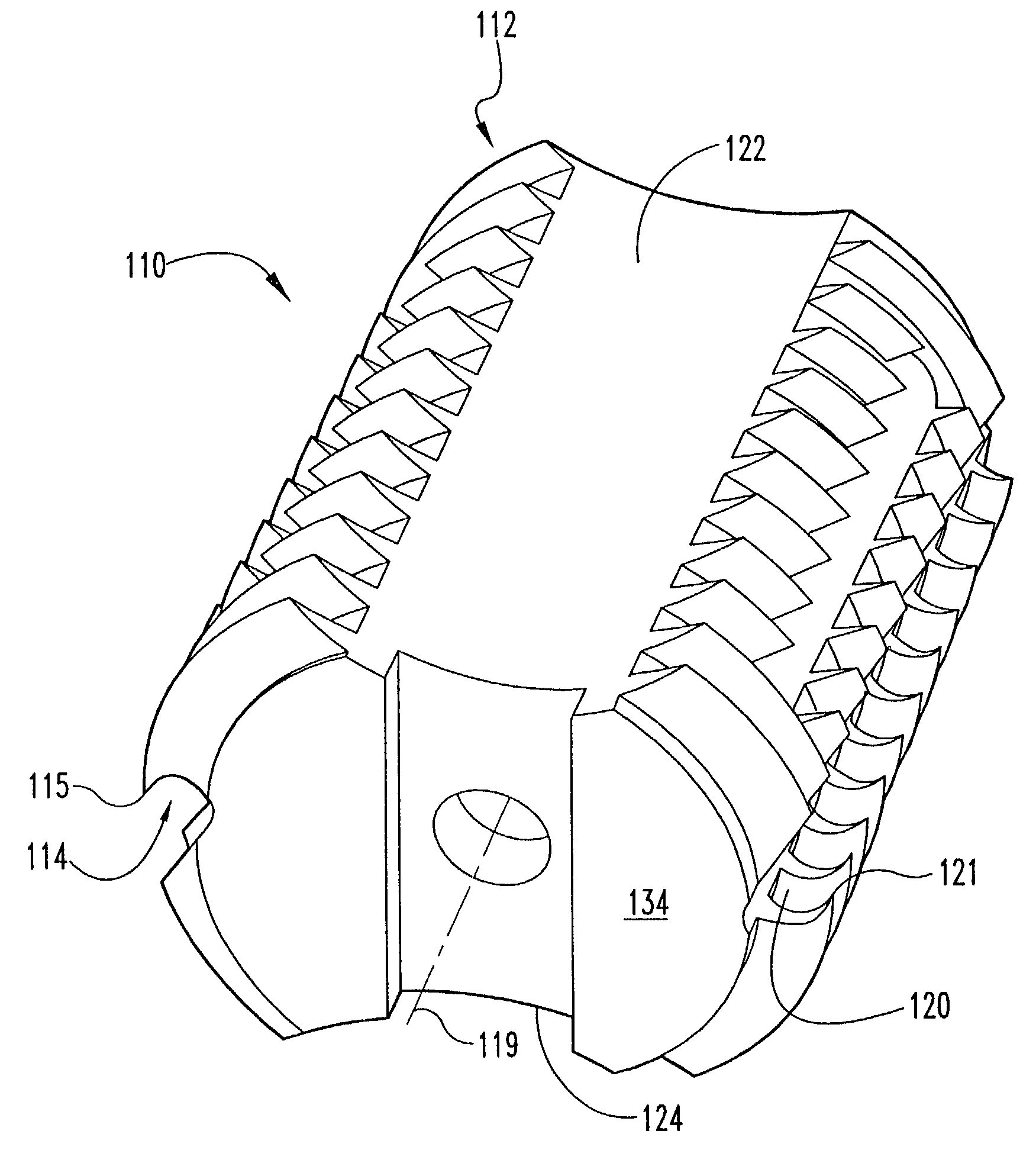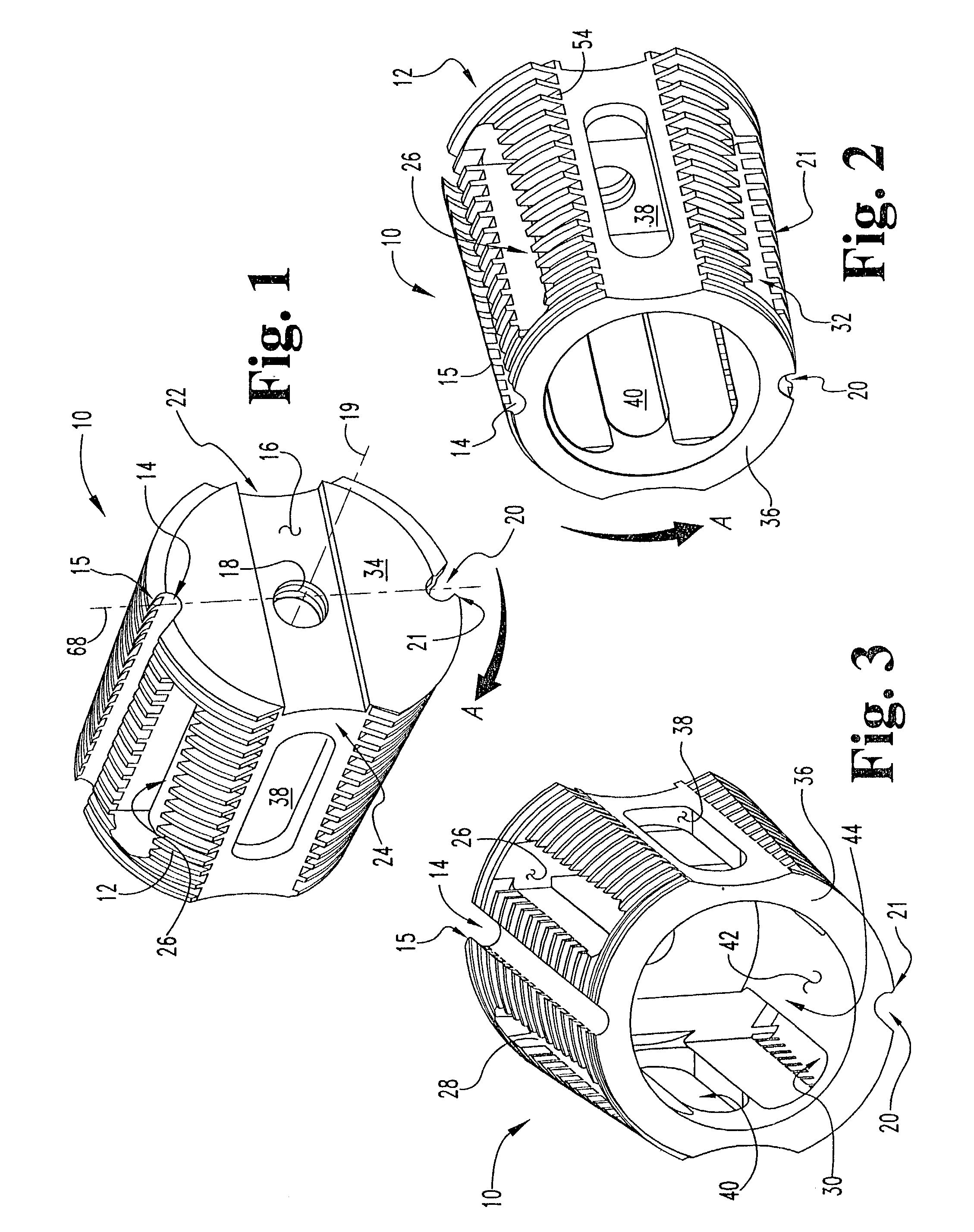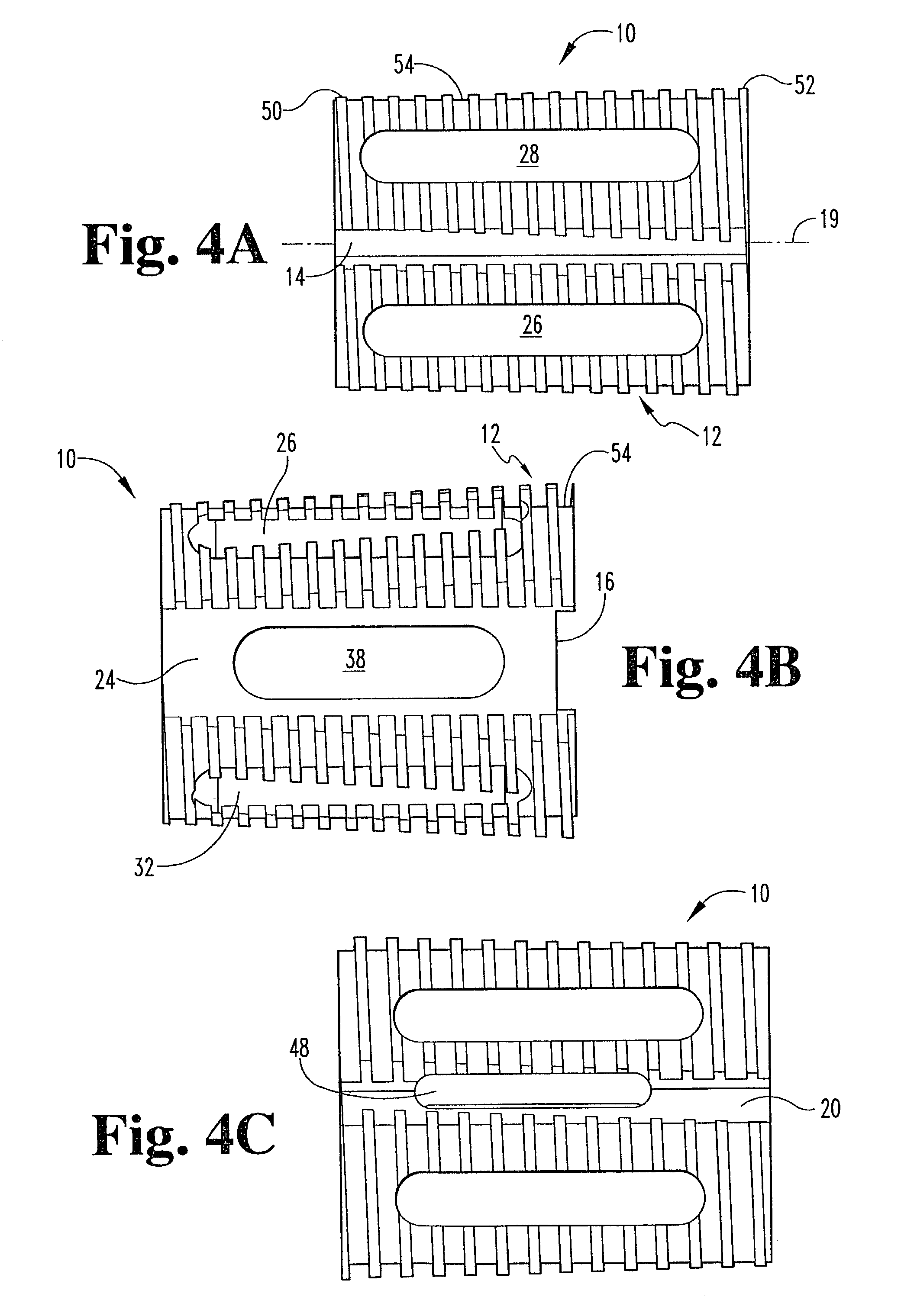Interbody fusion device with anti-rotation features
a technology of interbody fusion and features, which is applied in the field of interbody fusion devices, can solve the problems of limiting or even preventing bone healing, difficult quality control, and high cost of twisting each individual tooth to create a locking thread, and achieves the effect of increasing resistance to unscrewing
- Summary
- Abstract
- Description
- Claims
- Application Information
AI Technical Summary
Benefits of technology
Problems solved by technology
Method used
Image
Examples
Embodiment Construction
[0027]For the purposes of promoting an understanding of the principles of the invention, reference will now be made to the embodiments illustrated in the drawings and specific language will be used to describe the same. It will nevertheless be understood that no limitation of the scope of the invention is thereby intended, and such alterations and further modifications in the illustrated device, and such further applications of the principles of the invention as illustrated therein being contemplated as would normally occur to one skilled in the art to which the invention relates.
[0028]Referring now to FIGS. 1 through 6, there is shown an improved interbody fusion device or cage 10 according to the present invention. Device 10 comprises an elongated body having an outer surface 54 extended between a first end 34 and a second end 36 and defining a longitudinal axis 19. End 34 is referred to as the proximal end since it is the end closest to the user as the device is being inserted in...
PUM
 Login to View More
Login to View More Abstract
Description
Claims
Application Information
 Login to View More
Login to View More - R&D
- Intellectual Property
- Life Sciences
- Materials
- Tech Scout
- Unparalleled Data Quality
- Higher Quality Content
- 60% Fewer Hallucinations
Browse by: Latest US Patents, China's latest patents, Technical Efficacy Thesaurus, Application Domain, Technology Topic, Popular Technical Reports.
© 2025 PatSnap. All rights reserved.Legal|Privacy policy|Modern Slavery Act Transparency Statement|Sitemap|About US| Contact US: help@patsnap.com



